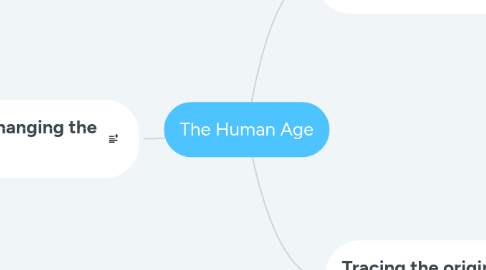
1. How we are changing the planet
1.1. Building cities
1.1.1. Visible but transient
1.1.1.1. Stratigraphically insignificant <------
1.2. Farming
1.2.1. Runoff from the use of fertilizers
1.2.1.1. Subtle traces
1.2.1.1.1. Stratigraphically insignificant <------
1.2.2. 38% of the planet's land for agriculture
1.2.2.1. Pollen record
1.2.2.1.1. Stratigraphically significant <------
1.3. Deforestation
1.3.1. Soil erosion + dams
1.3.1.1. Sendimentation
1.3.1.1.1. Stratigraphically insignificant <------
1.3.2. loss of forest habitat
1.3.2.1. extinction
1.3.2.1.1. Stratigraphically insignificant <------
1.4. Atmosphere
1.4.1. CO2 emission
1.4.1.1. Push global temperatures
1.4.1.1.1. Plants and animals shifting towards the Poles
1.4.1.2. acidify oceans
1.4.1.2.1. Reef gap
2. Tracing the origin of the Anthropocene
2.1. Paleoclimatologist William Ruddiman
2.1.1. 8000 years ago
2.1.1.1. Invention of agriculture
2.1.1.1.1. Increase in atmospheric CO2
2.1.1.1.2. Deforestation
2.2. Crutzen
2.2.1. Late 18th century
2.2.1.1. Ice cores shows
2.2.1.2. CO2 level uninterruptedly rise
2.3. Other scientists
2.3.1. Middle of 20th century
2.3.1.1. Population growth
2.3.1.2. Consumption
3. A new perspective on Earth's history
3.1. Italian geologist Antonio Stoppani (1870s)
3.1.1. Ignored
3.2. Dutch chemist Paul Crutzen (2002)
3.2.1. Taken seriously by other scientists
